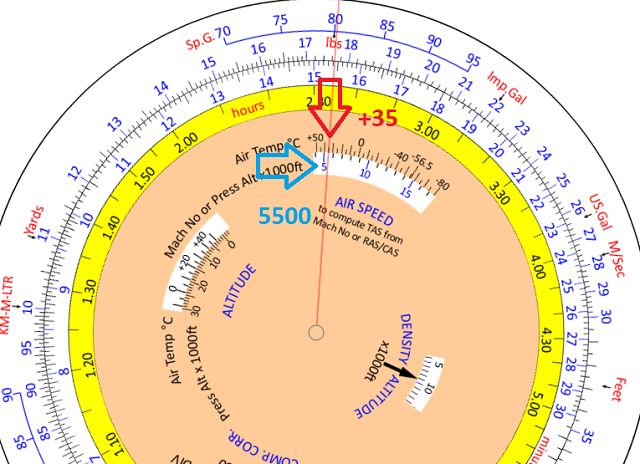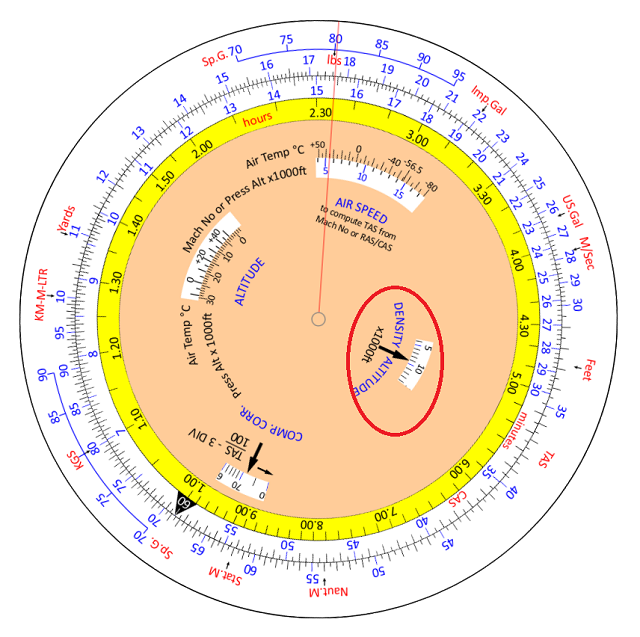The Navigation Computer: Calculation of Density Altitude from Pressure Altitude and Temperature
Density Altitude has nothing to do with vertical distance. It is a measure of aircraft performance. Density Altitude is the altitude in the ISA atmosphere which corresponds to the density which you are experiencing in your current ambient atmosphere. It affects aircraft performance and engine power. Most manufacturers quote a declared performance in terms of Density Altitude. Most performance graphs already allow for this correction in the entering arguments to the graph, but if yours does not, you need to be able to calculate it.
As before, there are 2 methods of solving the problem - the formula and the use of the Navigation Computer.
The formula is as follows:
Density Altitude = Pressure Altitude + (ISA Deviation × 120)
(Strictly speaking, the conversion factor should be 118.8, not 120, but 120 is close enough)
Example:
You are at Nairobi, pressure altitude 5500 feet. SAT is +35°C. What is Density Altitude?
ISA at FL5.5 is +4°C, so our SAT of +35°C is ISA +31°C.
Substituting into the above equation:
Density Altitude = 5500 + ( + 31 × 120 )
Density Altitude = 5500 + ( 3720 ) = 9220
Now try the same problem on the Navigation Computer.
This one is not so obvious because you start off with the AIRSPEED window.


Set 5500 feet against +35°C.

Now look in the DENSITY ALTITUDE window.
Read off the answer of 9200 feet.

Unfortunately, the divisions on the Navigation Computer DENSITY ALTITUDE window are rather small and it can sometimes be difficult to separate closely spaced examination answer options. With Density Altitude calculations, unlike True Altitude, it may sometimes be necessary to use the formula rather than the Navigation Computer to get a sufficiently accurate answer.
© 2022 terms of use privacy policy